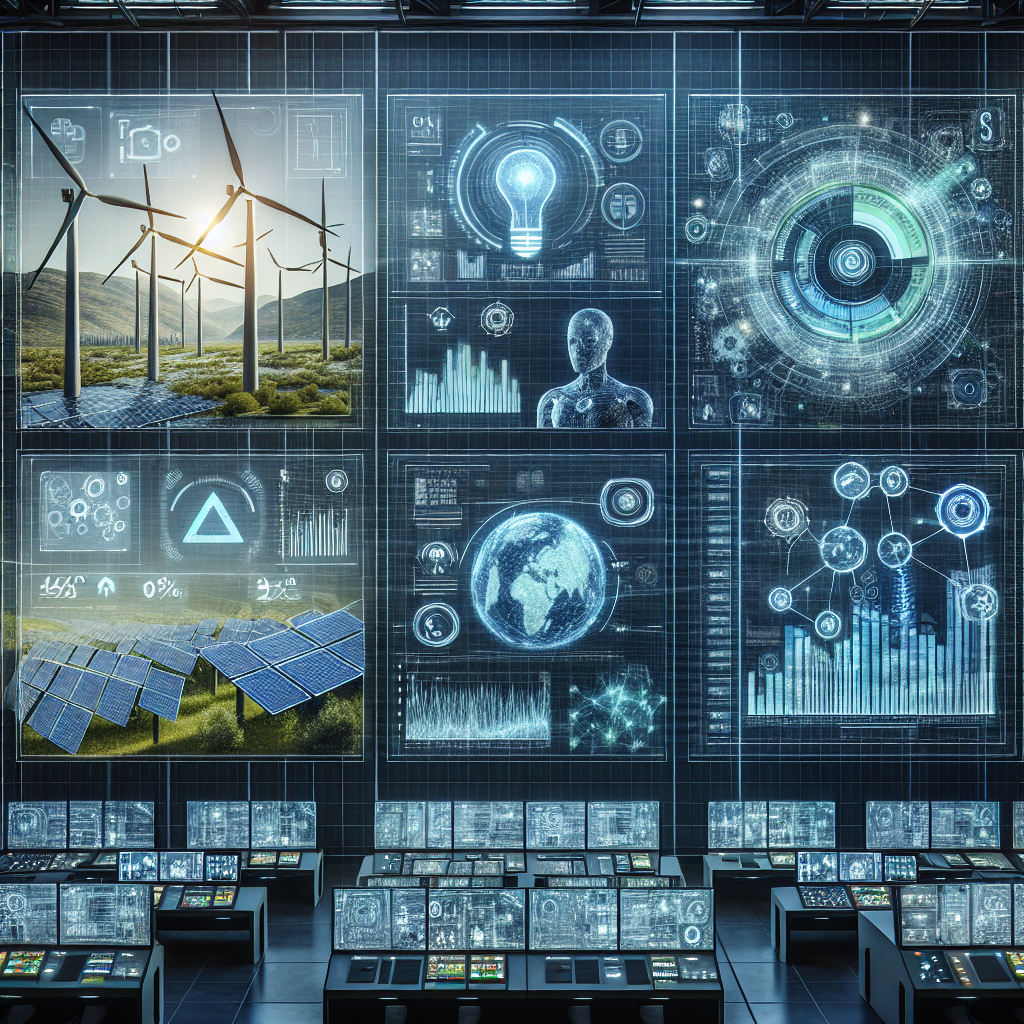In recent years, there has been a growing interest in using artificial intelligence (AI) solutions to enhance renewable energy distribution. With the increasing demand for clean and sustainable energy sources, AI technology offers a promising way to optimize the distribution of renewable energy and improve overall efficiency. In this article, we will explore how AI solutions can be used to enhance renewable energy distribution and address some commonly asked questions about this emerging technology.
AI Solutions for Renewable Energy Distribution
AI technology has the potential to revolutionize the way renewable energy is distributed and managed. By leveraging AI algorithms, renewable energy producers can optimize energy production, storage, and distribution in real-time, leading to increased efficiency and cost savings. Here are some key ways AI solutions can enhance renewable energy distribution:
1. Predictive Analytics: AI algorithms can analyze historical data and forecast future energy production and consumption patterns. By predicting energy demand and supply fluctuations, renewable energy producers can optimize their operations and make informed decisions about energy distribution.
2. Energy Management Systems: AI-powered energy management systems can automate and optimize energy distribution in real-time. These systems can adjust energy production and storage levels based on demand, weather conditions, and other factors, ensuring a reliable and efficient supply of renewable energy.
3. Grid Optimization: AI solutions can optimize the distribution grid to accommodate the increasing penetration of renewable energy sources. By analyzing grid data and predicting potential grid congestion, AI algorithms can help utilities manage grid stability and ensure a smooth integration of renewable energy into the grid.
4. Demand Response: AI technology can enable demand response programs that incentivize consumers to adjust their energy consumption based on real-time pricing and grid conditions. By leveraging AI-based demand response systems, utilities can reduce peak demand, balance energy supply and demand, and improve overall grid reliability.
5. Asset Management: AI solutions can optimize the maintenance and operation of renewable energy assets, such as solar panels and wind turbines. By analyzing sensor data and monitoring equipment performance, AI algorithms can predict equipment failures, schedule maintenance activities, and maximize asset lifespan.
6. Energy Trading: AI-powered energy trading platforms can facilitate the exchange of renewable energy between producers, consumers, and grid operators. By automating energy trading processes and optimizing market transactions, AI solutions can help create a more efficient and transparent energy market.
FAQs about AI Solutions for Enhancing Renewable Energy Distribution
Q: How can AI help optimize renewable energy production?
A: AI algorithms can analyze data from renewable energy sources, weather forecasts, and energy demand patterns to optimize energy production levels. By adjusting energy production in real-time, renewable energy producers can maximize energy output and minimize waste.
Q: How does AI improve energy storage for renewable energy?
A: AI solutions can optimize energy storage systems by predicting energy demand and supply fluctuations, managing energy storage levels, and maximizing the efficiency of energy storage technologies. By leveraging AI algorithms, renewable energy producers can store excess energy during low-demand periods and release it during peak demand times.
Q: Can AI help integrate renewable energy into the existing grid infrastructure?
A: Yes, AI technology can optimize the distribution grid to accommodate the increasing penetration of renewable energy sources. By analyzing grid data, predicting potential grid congestion, and optimizing grid operations, AI algorithms can help utilities integrate renewable energy into the grid more effectively.
Q: How can AI improve the efficiency of renewable energy distribution?
A: AI-powered energy management systems can automate and optimize energy distribution in real-time, leading to increased efficiency and cost savings. By adjusting energy production, storage, and distribution levels based on demand and grid conditions, AI solutions can ensure a reliable and efficient supply of renewable energy.
Q: What are the benefits of using AI solutions for enhancing renewable energy distribution?
A: Some key benefits of using AI solutions for renewable energy distribution include increased energy efficiency, cost savings, grid stability, and environmental sustainability. By leveraging AI technology, renewable energy producers can optimize energy production, storage, and distribution processes, leading to a more reliable and sustainable energy supply.
In conclusion, AI solutions have the potential to enhance renewable energy distribution by optimizing energy production, storage, and distribution processes. By leveraging AI algorithms, renewable energy producers can improve energy efficiency, grid stability, and overall sustainability. As the demand for clean and sustainable energy sources continues to grow, AI technology will play a crucial role in shaping the future of renewable energy distribution.

